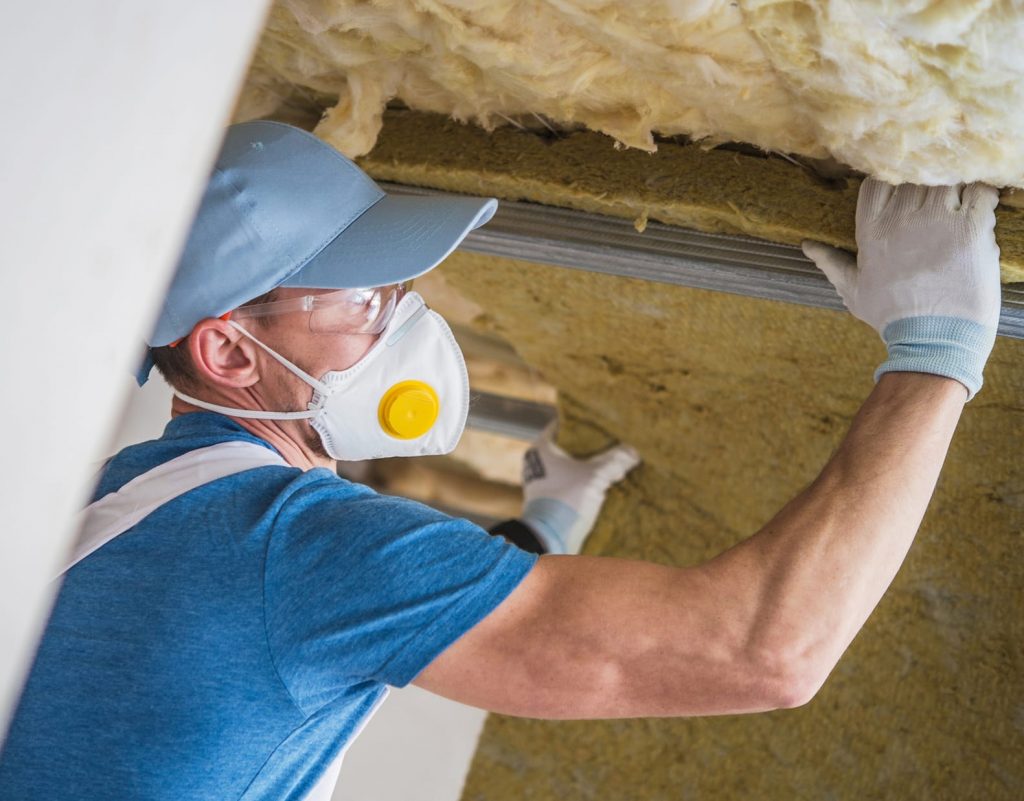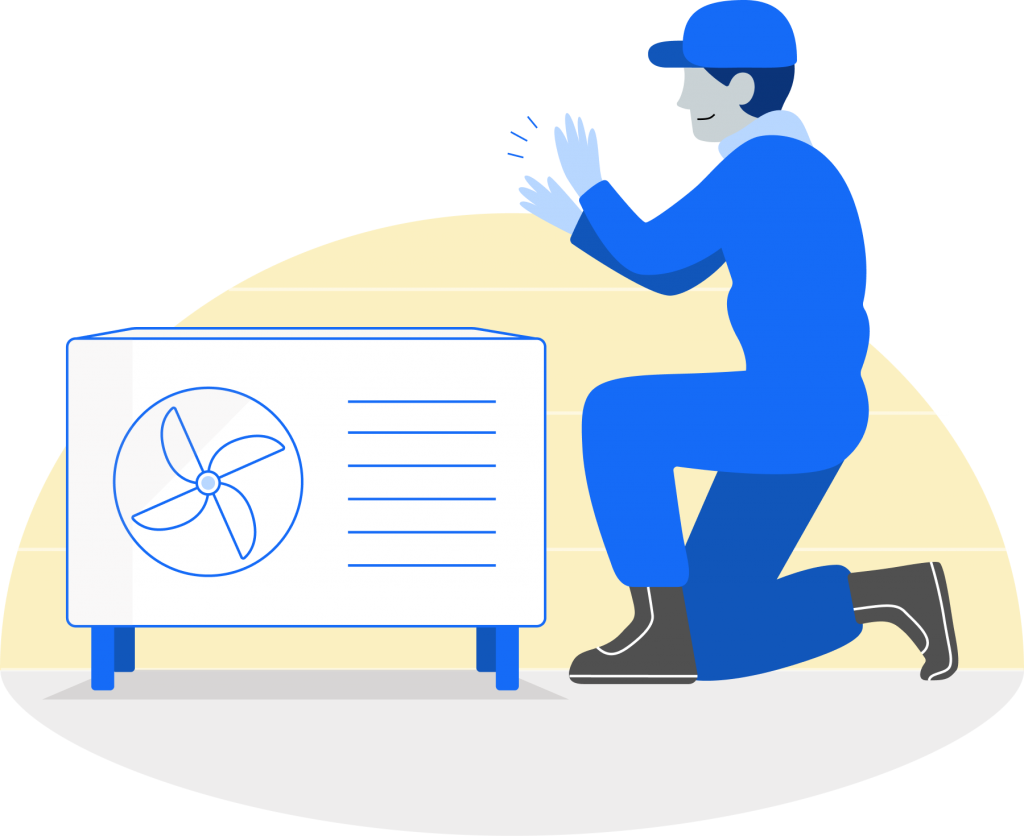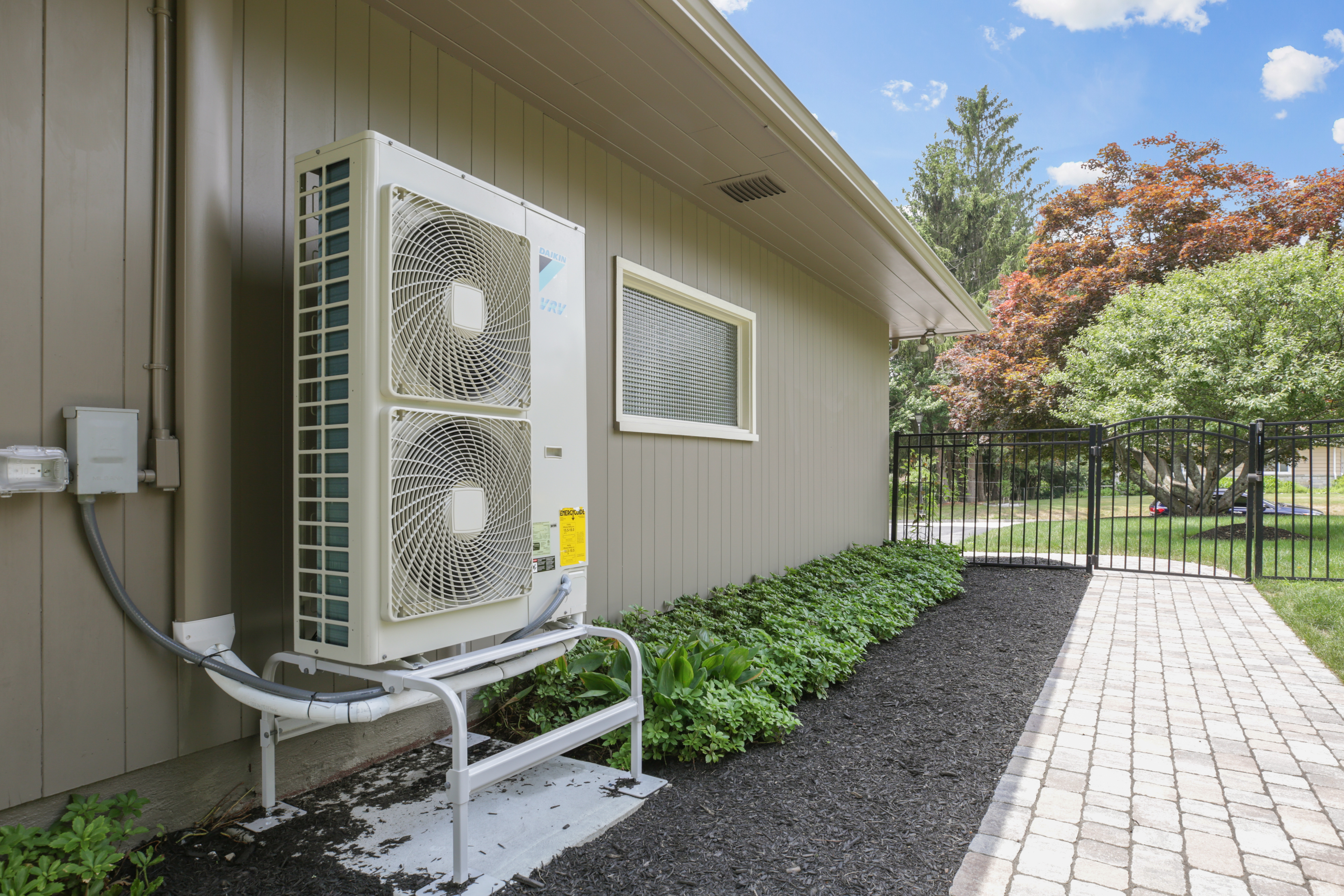Don’t sweat. In this guide, we’ll help you troubleshoot an AC system that’s blowing warm air so you can get back to feeling great.
Ever feel like the air in your house is just… flat?
Stale air is a common problem, especially in the summer, which is why many homeowners learn to just tolerate their stuffy rooms.
But you definitely shouldn’t ignore stale air. (And depending on where you live, programs are available that can help fix your home ventilation issues at $0 upfront cost. Tap here to see if you qualify.)
If your house feels stuffy, that means air isn’t circulating properly, clean air isn’t making it’s way into your whole home, and you’re breathing in contaminants in stagnant air.
And these aren’t problems you should live with. Ready to fix your stuffy house problem for good? Let’s get started.
- Why is your room stuffy? 4 reasons your inside air feels stale
- Why you need to fix your stuffy house problem
- How to clear stale air in your house—short-term fixes
- How to get rid of stale air in a house permanently
- What is stale air?
- How do you clear stale air?
- Is stale air bad for you?
(In a rush? Jump right to short-term fixes or permanent fixes.)
Why is my room stuffy?
The big picture is simple: The inside of your house feels stuffy and stale because air isn’t circulating properly. Stuffy-feeling, stale air can get trapped in your home due to airflow and ventilation issues, like insufficient insulation or a worn-out HVAC system.
And when air doesn’t flow correctly, pollutants and moisture can build up, causing the air you breathe to have a musty smell and feel stale and uncomfortable.
Stale, uncirculated air can cause—or contribute to—a wide variety of health problems, such as fatigue, coughing, respiratory irritation, and headaches.
North Jersey News
While the cause of stuffy-house syndrome is clear, figuring out exactly what’s hindering circulation can be a little trickier.
Here are a few of the most common reasons you have a stuffy house:
- Your HVAC isn’t working properly.
- Your house is letting outside air in.
- The airways in your house need maintenance
- Your house has a mold or mildew problem.
Let’s dive into each one of these reasons below.
1. Your HVAC isn’t working properly.
Put simply: The most likely culprit behind a stuffy house is your HVAC system. A functioning heating and cooling system will keep air flowing constantly throughout your home, pushing out old air and bringing in new, fresh air.
If air seems really uncomfortable and “stuck” in your house—that is, there just never seems to be good, consistent airflow—there’s a good chance that your HVAC isn’t doing its job properly, and you may be due for a replacement (or at least a maintenance session).
Having AC issues? Check out this troubleshooting guide if your AC isn’t working properly.
There’s another scenario to consider, though, especially if your house is mainly stuffy in summertime.
2. Your house is letting hot air in.
Any effective climate control system has two parts: An HVAC system that controls the temperature and circulation of air inside your home, and a “thermal boundary” to keep inside air in and outside air out.
If your house doesn’t have an effective thermal boundary—that is, it’s not properly insulated and air sealed—there’s not much to stop muggy and oppressively warm air from the outside from getting inside your home.
And if your house can’t keep warm, muggy air outside, even the best air conditioning system will struggle to keep your house feeling comfy.
A telltale sign of this problem happens during the summer, when stuffy, hot air can collect in the upper floors of your house for months at a time. (If this is happening to you, we’re sorry. It’s truly no fun.)
By the way, this problem is often a one-two punch—many houses with inadequate insulation also have insufficient HVAC systems that can’t correctly regulate humidity levels (especially if the house is older).

But even if you’ve updated your HVAC system, you might be overworking it and decreasing its efficiency if your house doesn’t have the proper insulation or air sealing upgrades.
That’s why the experts at Sealed often recommend new insulation and air-sealing alongside HVAC upgrades.
You’re overworking your HVAC and decreasing its efficiency if your house doesn’t have the proper insulation or air sealing upgrades.
3. The airways in your house need maintenance.
Sometimes a stuffy, stale air problem can be traced back to something even simpler: Blocked air vents, air leaks in ductwork, and dirt in your ductwork.
If the ductwork in your home hasn’t been inspected or cleaned in a while, it’s worth having a professional take a look to ensure that all the ducts are clear and ready to go.
You can even check for some ductwork issues yourself.
For example, it never hurts to do a quick sweep to make sure fabrics and upholstery aren’t covering any of the vents for your central cooling and heating system.
You can also turn on your HVAC’s circulation system and hold your hand in front of all the vents—if there’s no air coming out, that’s a bad sign.
If you’re feeling especially adventurous, you can even use a flashlight to look down your air ducts to see if there are any obvious openings or funny-looking seams.
Of course, if you want to save time—and stay away from dander and dust bunnies (no judgment, but they don’t make the best pets)—the best way to check for duct issues is to call a pro. (Talk to a Sealed home expert.)
4. Your house has a mold or mildew problem.
It’s less common, but sometimes a stale air smell can be caused by a mold or a mildew problem in your house.
Moisture buildup issues are especially prevalent in older houses or houses that have had long-term air circulation issues. In other words, the longer a house has insufficient airflow and ventilation system problems, the more likely it is to develop mold or mildew.
Detecting a serious mold problem can be a challenge, so if your house smells musty or has a history of water damage (or if you start to see any kind of visible growth on the walls or ceilings of your house, of course) it’s time to call in an expert.

You deserve a comfortable home.
Check out our FREE home comfort guide to learn how 3 core upgrades can make your home feel better year round.
Bonus checklists and case studies included.
Here’s why you need to fix your stuffy house problem
Stale, stuffy air in your house is both a health risk and a hamper on your quality of life. If your house has airflow problems, it’s important to get it fixed before it leads to more issues.
You’ll cover the details below.
Stale air is a health risk
Getting rid of stuffy, stale air isn’t just about comfort or a “good room feel.” If air isn’t circulating properly in your home, allergens, moisture, and air pollutants build up in the air you breathe, which can cause or exacerbate a wide variety of health issues (think recurring headaches, ongoing fatigue, and skin problems).
That’s bad enough, but if you have an underlying health condition the stale air problem gets worse.
For people with respiratory issues or severe allergies, for example, living in an environment with stale air and bad airflow can be downright dangerous.
And poor indoor air quality might even play a role in the development of asthma in young children (1).
(By the way, here’s how to know if your home air quality is up to standards.)

Stale, stuffy air is a quality of life risk
Health issues are very important, but they’re not the whole story.
A stuffy house just isn’t comfortable—for you or your guests. It’s hard to feel relaxed in a room full of warm, stale air, and it’s difficult to feel excited about inviting someone else into a space that’s stuffy and muggy.
Ultimately, your house can—and should—feel wonderful. In fact, a comfortable home can have a positive impact on your emotional and mental health. If poor airflow is hindering your enjoyment and use of your home, why not fix it?
Let’s look at how to do that.
How to get rid of stale air in a house—short-term fixes
There are a few things you can do to help reduce stale air or a stuffy house in the short-term:
- Open the windows.
- Get your ceiling fans going.
- Invest in air filtration and dehumidifiers.
- Get your HVAC serviced (and your ducts cleaned).
Open the windows
A simple way to get air flowing is to open a window (or two, or four). Obviously, the success of this fix can depend largely on the weather and the quality of the air outside your home, but keep in mind that if you don’t want to open a window all the way, you can always crack it just a little. And for the best ventilation results, crack as many windows as possible (2).
Use fans
You need to get the air moving by any means possible, so switch on your ceiling and bathroom fans and keep them on. Then, consider your other fan options (as well as how long you want to depend on short-term fixes!).
If you’re not quite ready for a permanent solution, consider placing free-standing fans at strategic points throughout the room. You want fans blowing through the room (not at walls), and the closer you can place them to open windows, the better (3).
Invest in air filtration and dehumidifiers
Air purifier units and dehumidifiers have come a long way in recent years, and if you need to quickly fix a room that has unhealthy, muggy air, getting a few stand-alone air treatment units might be a good idea, like Blueair purifiers.
Keep in mind that these units can be expensive, noisy, and unsightly—and they take up space in every room you need to treat—so if you’re considering a more permanent solution to your stale air problem, you may want to hold off on purchasing floor units.
If you’re having humidity issues, check out What should the humidity be in my house to troubleshoot.
(Fact: A heat pump HVAC system will automatically dehumidify and filter your entire home—without raising carbon dioxide levels in your home…. and it cools in summer and heats in winter. It’s an all-in-one HVAC appliance. Pretty nifty!)
Get your HVAC serviced (and your ducts cleaned)
Finally, if it’s been a while since you’ve had your current heating and cooling system serviced, it’s worth calling a qualified HVAC technician to make sure everything is working to its full potential.
A quick tune-up might improve the circulation in your stuffy house (there’s no guarantee here, but keeping your HVAC maintained is a good idea, in any case). Find out how long does HVAC last.

Important caveat: It’s tempting to avoid bigger home maintenance expenses by leaning on short-term fixes like the ones mentioned above.
But while these solutions might provide some temporary relief, none of them work nearly as well (or are as cost-effective in the long-term) as addressing the root of your house’s circulation problem.
So how do you fix the real issues? That’s what we’re getting to next.
How to get rid of stale air in your house permanently
Fixing your stuffy house once and for all is going to take a plan and some expertise—and maybe a home improvement project or two—but the end result will be more than worth it.
You’ll make your home feel better and it will help you cut energy waste in your house, too. (Plus, if your house qualifies, it’s easy to get a free customized plan for your home from a Sealed home expert.)
Here’s how to fix your stuffy house—once and for all.
Upgrade your HVAC system
You already know that your HVAC likely bears at least some of the blame for the stale air issues in your house. (Need more info? Check out When to replace your air conditioner and our Home heating guide.)
That said, if you’re like most homeowners, recognizing the problem feels like the easiest part of the process.
After all, deciding on a new HVAC system can be intimidating. How do you make sure you purchase the right system for your home—a system that will solve circulation issues and reliably keep your house comfortable?
This used to be a difficult question, but it isn’t any more. The reviews and science are in, and it’s clear that one HVAC system tops everything for great air circulation and efficient heating and cooling: the heat pump.
They’re best and most efficient home HVAC technology on the market today.

Heat pumps are an all-in-one technology—they heat and cool your home. They also dehumidify and filter your home’s air. Tap here to learn about heat pump cooling in hot weather.
Plus, they’re whisper-quiet and don’t smell. They work for houses in cold climates as well as older homes. And they use up to 2/3 less energy than other HVAC systems on the market.
All in all, heat pumps are so advanced, we call them the Tesla of HVAC (it’s a joke, but not really).
More to the point: Unlike on-again-off-again HVAC systems, heat pumps provide a constant flow of fresh, purified air throughout your home—365 days per year—which will make stale air a thing of the past in your previously stuffy house.
The biggest downside to heat pumps, frankly, is the initial cost. (Learn more about heat pump costs at The Ultimate Guide to Heat Pumps.)
But don’t panic about the investment. If your house qualifies, you can get a heat pump for no upfront cost through Sealed. Tap here to see if your house qualifies.
While we’re talking home improvement projects, there’s also one other thing you should strongly consider.
Get your house professionally air sealed and insulated
Besides keeping the rain and snow off of your dinner table, your house has another major job: Keeping outside air out.
And if it’s not doing that job correctly, you won’t get the most out of your HVAC investment (or even a smart thermostat)—especially during the summer, when the air is hot and muggy.
That’s why making sure your home’s thermal boundary is up-to-date will be key to making sure your stuffy house problems are gone permanently.
There are basically two steps to making sure hot, stale air stays outside:
The first step is to close up all the tiny holes and gaps in your house. If your house is like most in the US, it’s got a bunch of air leaks—especially in the attic and around the foundation. This process of closing these gaps is called air sealing, and it’s a game-changer for ensuring your house’s thermal boundary does its job.
The second step is to make sure your house is well insulated. That might seem like a no-brainer (“Of course my house is insulated!” you’re thinking), but the truth is that lots of houses:
- Are under insulated
- Have insulation that’s aged-out of its effectiveness and broken down over time
- Or have insulation that isn’t the correct type for local temperatures
If you have a large, old house, you might be shocked at how many corners and tiny attics aren’t insulated at all.
And even if you have a house that was built recently, you could have builder-grade insulation and hidden attics or crawl spaces that weren’t insulated at all at the time of construction.
Basically: If you haven’t had an expert analyze your insulation situation, now is the time—and especially if you’ve got stuffy rooms or stale air problems.
Sealing and insulating a house correctly takes time and expertise—not to mention specialized installation skills…. it doesn’t make for a good weekend project. The best way to get your house professionally air sealed and insulated is to get someone who knows what they’re doing.
Frequently asked questions about fixing stuffy air problems
Here are some of the most common questions about home airflow issues. Don’t see your question here? Talk to Sealed.
What is stale air?
Stale air is indoor air that isn’t circulating properly—and, therefore, isn’t mixing properly with fresh air. Stale, stuffy air can make you feel uncomfortable or too warm, and it often smells musty or strange. It’s definitely a problem that needs to be fixed.
How do you clear stale air?
The best solution to clear stale air permanently is to install an HVAC with a good circulation system (such as a whole-house heat pump or ductless mini splits) and make sure your house is properly insulated and air sealed.
If you need to clear stale air quickly, some good short-term fixes include:
- Opening (or at least cracking) as many windows as possible
- Using ceiling and stand-alone fans to circulate the air
- Purchasing an air filter and dehumidifier

Is stale air bad for you?
Yes, it can be. Stale, uncirculated air can cause—or contribute to—a wide variety of health problems, such as fatigue, coughing, respiratory irritation, and headaches (4).
Stale, musty air can also exacerbate pre-existing conditions such as asthma, and there’s evidence that poor air quality inside a home might even play a role in causing asthma for some individuals (5).
Fix stale air and stuffy rooms at $0 upfront
Stale air is annoying (and a health risk). It can make your home feel really uncomfortable, but it’s absolutely fixable.
And there’s no reason to tolerate a stuffy house—especially if your home qualifies for Sealed.
If your house is eligible, you’ll get a home upgrade plan from experts with years of experience in climate control and home air circulation. We don’t do cookie-cutter solutions either.
We’ll put together a custom plan, hire expert contractors, and make sure the work gets done right. If you don’t cut energy waste at home, we take the hit.
And you can get all of this work done at NO upfront cost. It’s a great system that gets great results.
As an architect and a homeowner, I can say that Sealed’s energy-saving expertise is really invaluable.
— Lisa, Sealed customer in Westchester, NY